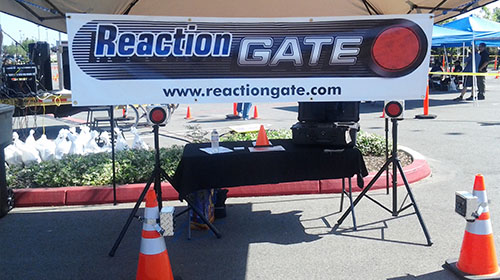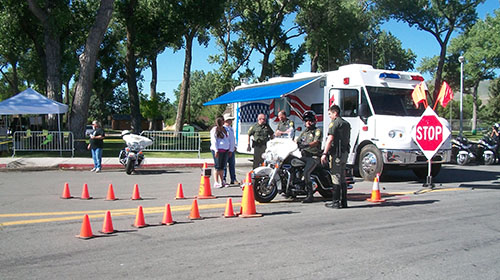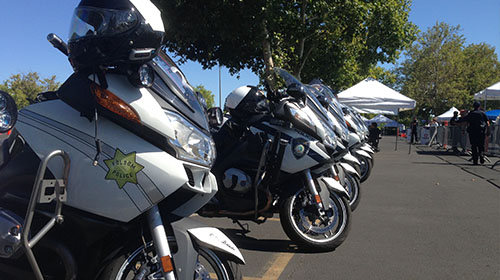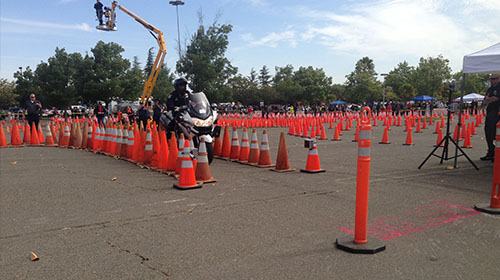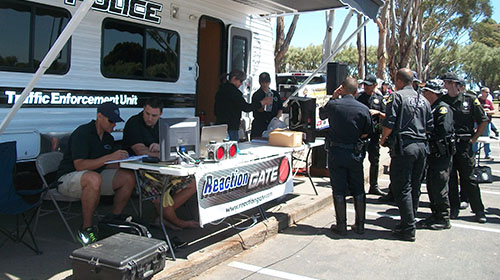ReactionGate™ Components
ReactionGateT&trade is a training and evaluation tool that enhances rider reaction time, strengthens focus, and helps improve riding skill. Commonly utilized in the “ Brake and Escape” or “40 mph Deceleration” evaluation patterns, the ReactionGateTM senses vehicle position, vehicle speed, and provides lighting indicating lanes of traffic to avoid as well as flashing if the vehicle is under speed.
The system consits of a base unit and two light units. Addition light units (upto eight) can be added to expand the system
Base Unit
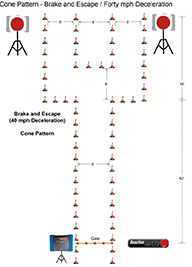
The Base Unit must be set up with the Gate (beam) pointed across the lane of traffic. A vehicle can be detected up to 10 ft from the Base Unit.
The “Gate” is typically set up to the side of the cone pattern with a clear view of the vehicle entering the pattern. Best practice is to set the Gate Length to the width of the traffic lane to avoid false triggering by personnel or equipment outside the cone pattern. Inside the Case is a tripod that the Base Unit will mount to. Typical height should be 20 inches “ such that the front and rear tire/bumper is detected by the system. The Gate must detect the entire vehicle to accurately determine the fault speed.
Light Units
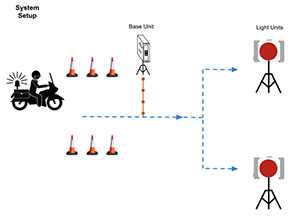
Light Units are placed on the course, typically as an indication of an object to avoid. The lights utilized in the system are brake lights and thus have a viewing angle of +/- 10°. While the Light Units are typically set up closer to the Base Unit, the wireless range between the Base Unit and Light Units must not exceed 500’.
LIDAR
LIDAR measures the vehicle's speed by sending out two laser pulses and calculating the difference in time it takes to detect the pulses of light reflected from the target
Android or iOS Interface
The smartphone interface for Android or iOS devices adds a level of flexibility and configurability that allows even more options and tools to the evaluator. On screen icons show the exact status of the beam, the triggered lights, fault condition, and ready status. Additional settings are under the configuration menu where the fault speed, flash rate and other options can be set and customized to the given scenario.
BMS
The ReactionGate&trade' utilizes a versatile and easily accessible AA battery design. Alkaline batteries also allows the system to easily transport via aircraft for those instructors on the go.
Accessories
Light Units are equipped with mounting hardware that allows for attachment to a 1 ¼” or 1 ½” mast. This mast is standard in the Tripod Kit (TRI-2)
Back to Top
